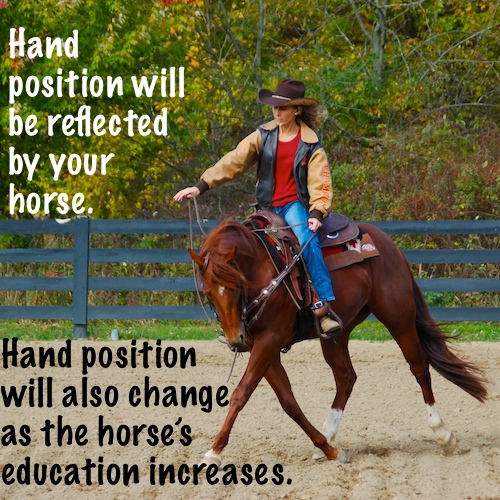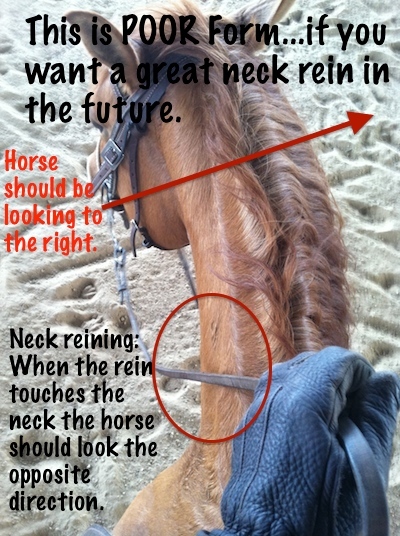This question was posted as a comment under: Stacy’s Video Diary: Jac- Episode 23- Spurs, backing up, shoulder control and natural horsemanship
“So, at my horse collage we also do spiral out and spiral ins, but we do it with forward and leg and holding the contact. We do not sprawl our hands out as you did (would get yelled at for doing so). Why do you have you’re hands so far out if I may ask?”
There are several reasons why I keep my hands this wide in the beginning. The first reason is that hand position does change how a horse carries his head and neck which is reflected in his body. One of the reasons Jac looks like a dressage horse in many of his photos at a trot is the drive from behind and freedom he has in his shoulders. The freedom is a lot easier to get with my hands wide…at least until Jac learns how to carry the frame I am after. Then my hands will get closer together.
Wide hands also help to break two common rider errors; touching the neck with the indirect rein when counter-bending and crossing across the mane with the indirect rein hand.
On the surface these don’t seem to be a big deal. Who cares if the indirect rein touches the neck when you
counter-bend? Your horse cares.
If you touch the indirect rein to his neck, say the left rein, while pulling his shoulder to the right with your direct rein (the right rein) then you are telling him it is acceptable….which is fine unless you ever want a really well trained neck rein.
For a well trained neck rein, when the left rein touches the left neck, the horse should look and turn to the right. If you spend several months ‘touching’ the rein while counter-bending….you will at least double the amount of time it takes for you to teach the horse really polished neck reining.
Finally, crossing the mane with the indirect rein is generally bad form. If the indirect rein didn’t help move the horse when applied (touched) to the horses neck then it is time for the direct rein to do its job. Pulling harder on the indirect rein will only pull the horse out of position. For example, if requesting a turn to the right, the left rein would ‘request’ and if the horse failed to follow through the right rein or left leg would need to ‘make’ it happen. If the left rein is pulled harder you will generally see the head tipped awkwardly to the left….yes, the horse may go right but with poor form. Not something I want to practice.
I also cover this topic, while mounted in video, in my Basic Body Control DVD available on my website.
1 Comments
Leave a Comment

FREE PDF DOWNLOAD
WHY IS MY HORSE...?
100% Private - 0% Spam
No one taught you the skills you need to work through these things.
Riders often encounter self-doubt, fear, anxiety, frustration, and other challenging emotions at the barn. The emotions coursing through your body can add clarity, or can make your cues indistinguishable for your horse.
Learning these skills and begin communicating clearly with your horse.
Click here to learn more.




I like this comment! Never really thought about it like this. Usually when counter bending and neck reining, I have always picked up and use my leg. Yes, and I always end up helping too much! 🙁 This is a good button to put on my horse this show season. Thanks!